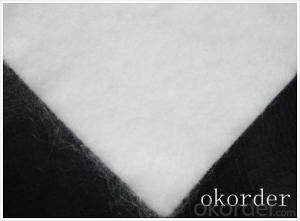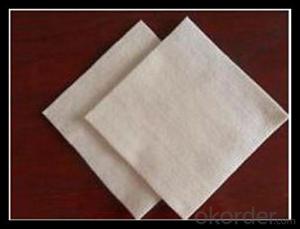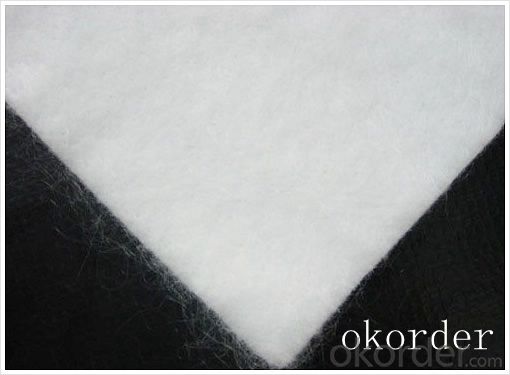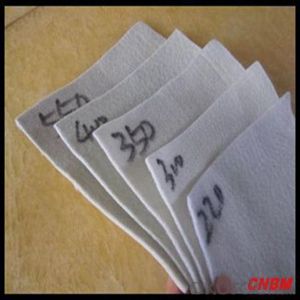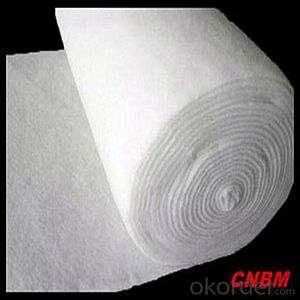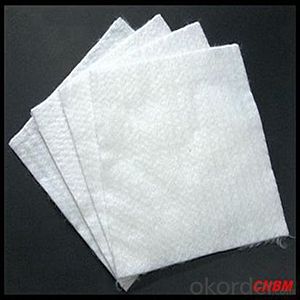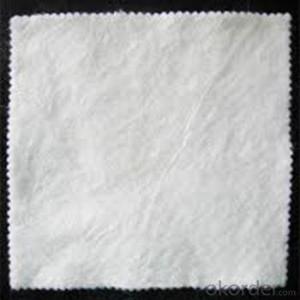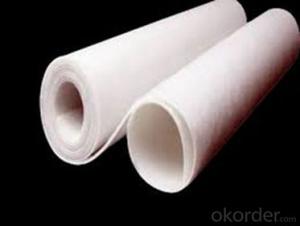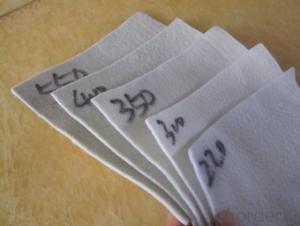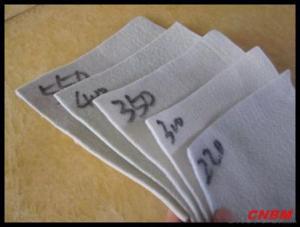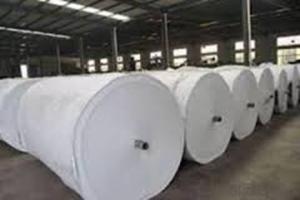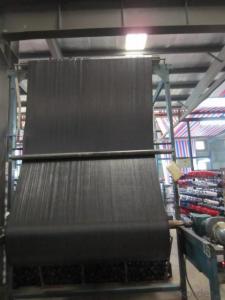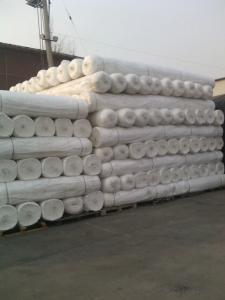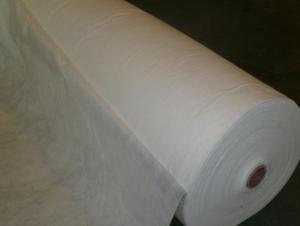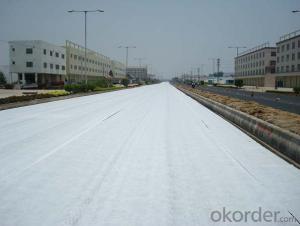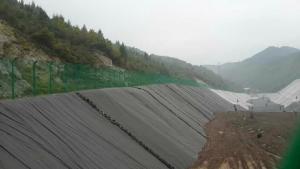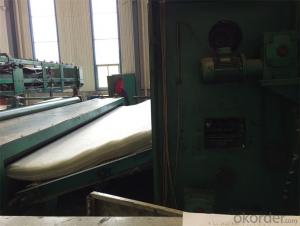Membrane Géotextile Long Non-Woven Geotextile Fabric for Road Construction
- Loading Port:
- China main port
- Payment Terms:
- TT OR LC
- Min Order Qty:
- 1000 m²
- Supply Capability:
- 1000000 m²/month
OKorder Service Pledge
OKorder Financial Service
You Might Also Like
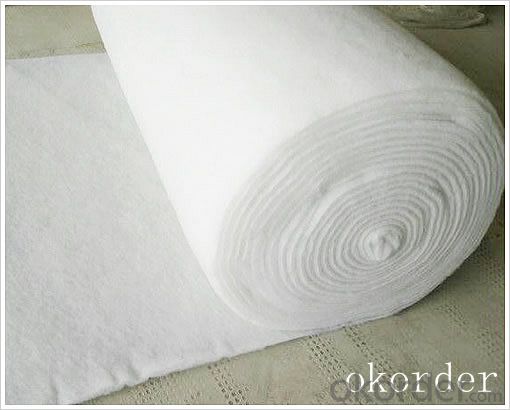
Product Introduction
Type:
Geotextiles, Nonwoven Geotextile woven Geotextile
Place of Origin:
Shandong, China (Mainland)
Brand Name:
CMAX
Model Number:
CMAX-S001
Geotextile Type:
Non-Woven Geotextiles Woven Geotextiles
Width:
1m-8m
Length:
Customer Requirment
Features
1)Geotextile can make the water flow easily, and form a drainage channel in the soil, and then make the liquid and gas out of the soil.
Make use of its pulling resistance and deformation resistance that can strength the soil to reinforce the stability of the construction structure and improve the soil’s quality.
2) Make the focus proliferate, deliver and decompose efficiently and prevent the soil from destruction from outside factor.
Packaging & Shipping
Packing: PLASTIC FILM INSIDE, AND WOVEN BAG OUTSIDE
Shipping: About 15 days after receipt the deposit
Our Service
Quality assurance
1.On a regular basis or as per your request,we entrust national testing agencies to conduct quality inspections
2. Strictly in accordance with the ISO9001-2008 international quality system standard,we monitor and manage the whole process throughout production,quality testing,and measurement to ensure product quality
3. For quality-related construction delay or substandard construction(except for damage or losses due to customer’s responsibility or irresistible natural disasters),we have refunding,replacement,and repair services.We will respond to customers’ feedbacks on quality issues within 24 hours.
Q: What kind of payments does jenor support?
A: T/T, L/C, Cash are accepted.
Q: Do you charge for the samples?
A: Accordeing to our company policy, the samples are free, we only charge the freight fee. And we will return the freight fee during the next order.
Q: Can you produce according to customers' design?
A: Sure, we are professional manufacturer, OEM and ODM are both welcome.
Q: Do you have other products?
A: Yes, please check the pictures:
geotextile fabric
permeability,filtration,easy for construction
ISO and CE certificate
Good quality and competitive price
- Q: What is the expected lifespan of geotextiles?
- The expected lifespan of geotextiles can vary depending on factors such as the quality of the material, the specific application, and the environmental conditions. However, on average, geotextiles are designed to have a lifespan of 20-30 years.
- Q: Do you need to suture the lower geotextile of composite geomembrane?
- Need to suture, but the operation is more trouble.
- Q: How do geotextiles help with reinforcement of geotextile tubes?
- Geotextiles help with the reinforcement of geotextile tubes by providing additional strength and stability. They act as a barrier between the soil and the tube, preventing soil erosion and maintaining the integrity of the structure. The geotextiles distribute the load evenly and reduce the risk of punctures or tears in the tube, thereby enhancing its overall performance and longevity.
- Q: How do geotextiles affect soil nutrient availability?
- Geotextiles can enhance soil nutrient availability by promoting better water and air circulation, preventing soil erosion, and increasing organic matter content. This allows for improved nutrient uptake by plants and reduces nutrient leaching, ultimately leading to healthier and more fertile soils.
- Q: How do geotextiles help with soil erosion control?
- Geotextiles help with soil erosion control by providing a physical barrier that stabilizes the soil and prevents erosion. They are specifically designed to allow water to pass through while retaining soil particles, which helps to reduce the velocity of water flow and minimize erosion. Additionally, geotextiles can increase soil strength and stability, improve vegetation establishment, and enhance overall erosion resistance in various applications such as road construction, embankments, and slope stabilization.
- Q: Does the geotextile filter cover the geotextile? Or impermeable geotextile?
- Geotextile has the role of anti-filter reinforcement, can not seepage, seepage is geomembrane, composite geotextile is also called composite geomembrane
- Q: Can geotextiles be used in the construction of agricultural ponds?
- Yes, geotextiles can be used in the construction of agricultural ponds. Geotextiles are permeable fabrics that can effectively filter water, control erosion, and stabilize soil. They can be used as a liner or barrier in the construction of agricultural ponds to prevent soil erosion, improve water quality, and provide stability to the pond structure.
- Q: How are geotextiles used in drainage systems?
- Geotextiles are commonly used in drainage systems to enhance their efficiency and longevity. These synthetic fabrics are placed in various parts of the system, such as around pipes or in trenches, to act as a filter and separator. By preventing the clogging of soil particles, geotextiles allow water to flow through while preventing the passage of fine particles. This helps maintain the system's hydraulic capacity and prevents blockages, ultimately improving the overall performance of the drainage system.
- Q: What are the different geotextile permeability testing standards?
- Some of the different geotextile permeability testing standards include ASTM D4491, ISO 11058, and EN ISO 12958. These standards provide guidelines for conducting tests to determine the hydraulic conductivity and permeability characteristics of geotextile materials.
- Q: What are the different types of geotextiles?
- There are several different types of geotextiles, including woven geotextiles, non-woven geotextiles, and knitted geotextiles. Each type has unique characteristics and is used for various applications in civil engineering and construction projects.
Send your message to us
Membrane Géotextile Long Non-Woven Geotextile Fabric for Road Construction
- Loading Port:
- China main port
- Payment Terms:
- TT OR LC
- Min Order Qty:
- 1000 m²
- Supply Capability:
- 1000000 m²/month
OKorder Service Pledge
OKorder Financial Service
Similar products
Hot products
Hot Searches
Related keywords
